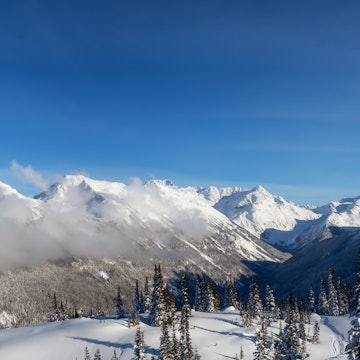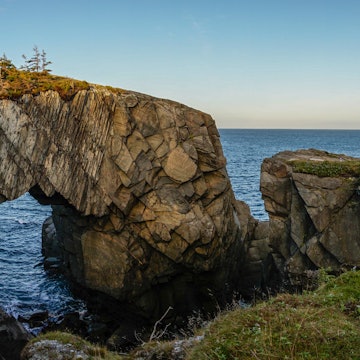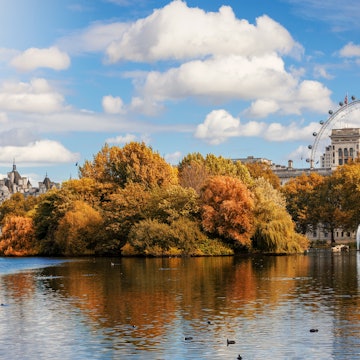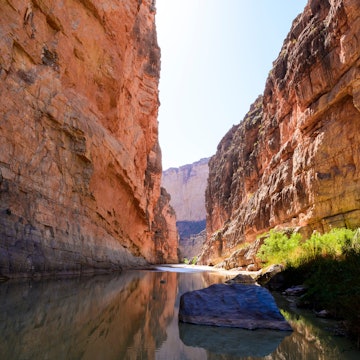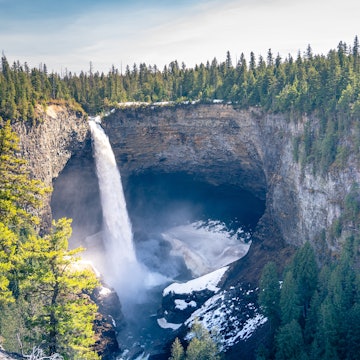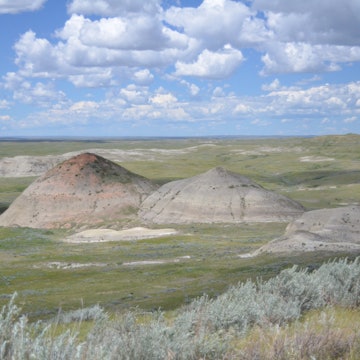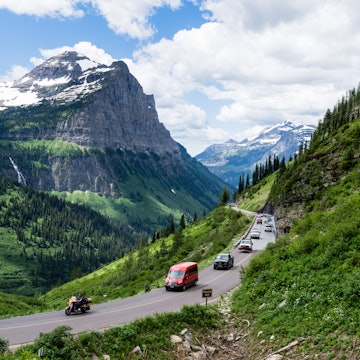
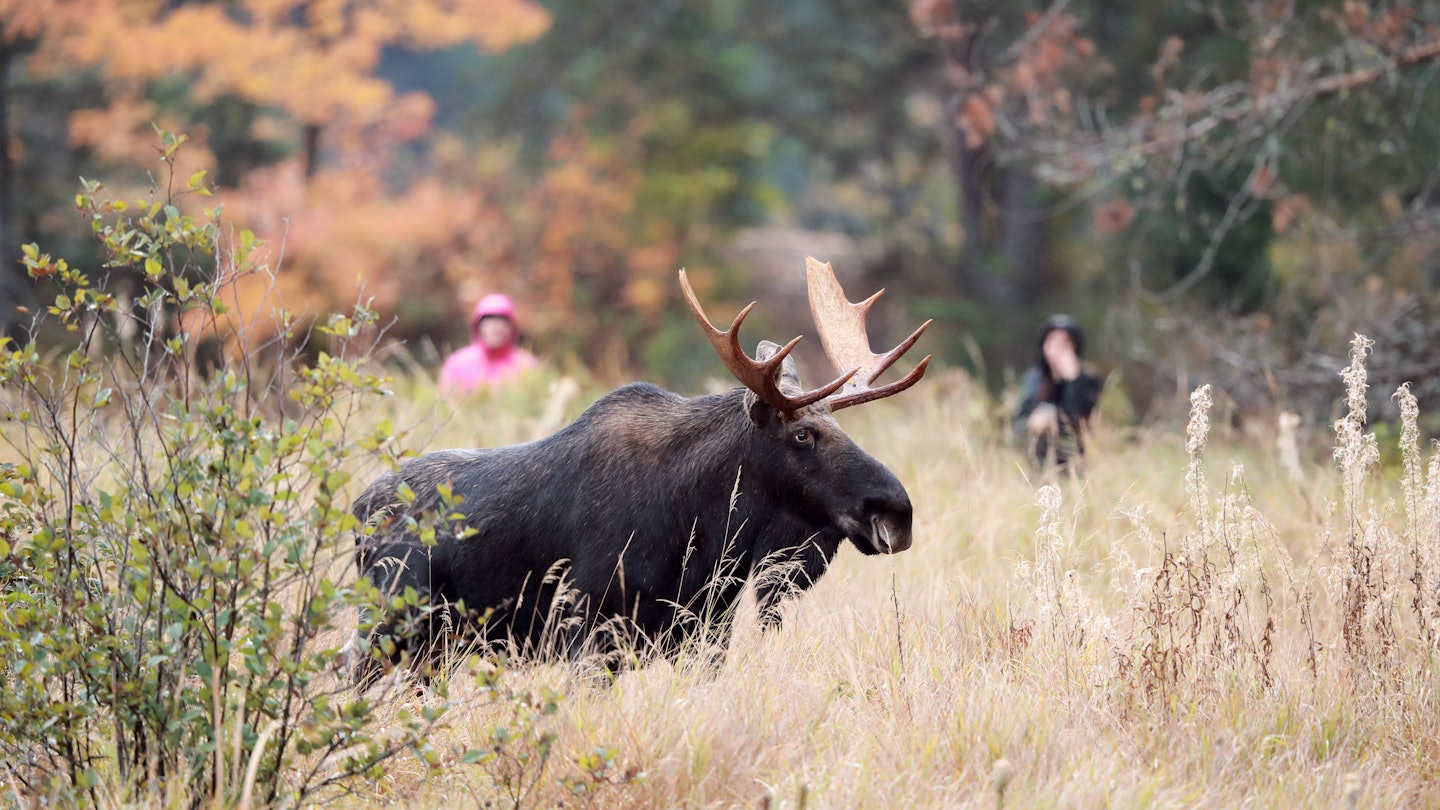
People walking along a trail stop to watch a Bull Moose during the rut in Algonquin Provincial Park in Ontario, Canada
Whether you’re keen to spot the mysterious spirit bear or listen to the songs of beluga whales, Canada’s varied terrain offers dozens of wildlife adventures that are bound to leave you in awe.
Canada's sprawling forests, arctic tundras and desert landscapes provide ample opportunity to spot furry critters in the wild. So grab your camera and a good pair of boots and set out for a few of the best places to see Canada’s incredible wildlife in their natural habitats.

Marvel at the power of polar bears in Churchill, Manitoba
Best time to go: July to November
With over 900-1000 polar bears in the area, Churchill is the world's polar bear capital.
Every year in late July or early August, the ice melts in Hudson’s Bay, drawing hundreds of local polar bears further inland until the bay freezes again.
This three-to-four-month period is prime for polar bear spotting. During the late summer, polar bears are calmer and are often spotted lounging in the fireweed or wandering the shoreline. But when November and the big freeze get closer, the bears become more active as they eagerly await their winter seal hunt.
Several Churchill tours, like Churchill Wild’s polar bear safaris, offer experiences ranging from tundra vehicle and walking tours to boat and helicopter tours. Most tours are full days, lasting around eight hours.
All polar bear experiences adhere to strict guidelines prioritizing the safety and well-being of the polar bears and the tourists. You should always go with a knowledgeable polar bear guide and educate yourself on polar bear protocol.
Local tip: This part of Canada is frigid, especially if you’re visiting later in the season as the bears get ready to head north to hunt. Make sure to pack appropriately: plan for lots of layers and look for insulated and waterproof outwear to stay warm and dry during your viewing.

Search for the mysterious spirit bears at the Great Bear Rainforest, British Columbia
Best time to go: June to October
Spirit bears are one of the most unique animals found in Canada. Also known as Kermode bears, they are a rare subspecies of the American black bear that get their all-white coloring from recessive genes. They’re sacred to and protected by the First Nations people of Canada and can only be found in the Great Bear Rainforest on the coast of British Columbia.
The Great Bear Rainforest is a remote protected area mainly accessible by boat or float plane. There’s plenty of Canadian wildlife to see in this temperate rainforest. The landscape alone, which includes natural hot springs, waterfalls and glacial fjords, will leave you stunned.
But, without a doubt, the highlight of a visit to this region is spotting a spirit bear. There's a chance you might see these elusive bears anytime from June to October, but they are best seen from August to September during the annual salmon run. They are nocturnal, so day and nighttime sightings are both fair game.
Local tip: Bears are adorable-looking creatures, but remember that they are wild and potentially dangerous animals. It’s advised to brief yourself on bear safety before your adventures and be sure to always follow and listen to your guide.
Explore Canada’s great outdoors on these hiking trails
Observe narwhals from a floe edge in Nunavut
Best time to go: mid-May to mid-June
Narwhals love the Great White North. Sometimes called the “unicorn of the sea,” thanks to their singular long tusk, it’s estimated that 90% of the world’s narwhal population can be found in Canada’s arctic waters. The cool waters provide the perfect habit for the whales to feed and rear their young.
Narwhals stay mainly between Northern Hudson’s Bay and Ellesmere Island in Nunavut. The best place to spot them is from the floe edge, where the open water meets the ice still attached to the shoreline. The floe edge only lasts about four weeks, from mid-May to mid-June, before it melts away for the summer.
Floe edge safaris like those with Arctic Kingdom allow tourists to observe narwhals as they feed and swim at the ice's edge.
Local tip: Bring a GoPro and extension pole that you can stick underwater at the floe edge for some potentially epic footage of narwhals and other arctic sea life below the surface.
Listen to beluga whales sing in Churchill, Manitoba
Best time to go: June to September
Polar bears aren’t the only Canadian wildlife that Churchill is known for. This remote part of the country is also home to a large population of beluga whales.
About 136,000 beluga whales (2/3 of the world’s population) can be found in Canadian waters in the summer. These social mammals hang around Hudson’s Bay, with around 3,000 coming further down to the Churchill river basin in the summer months.
Beluga whales are white in color and are nicknamed the “canaries of the sea” thanks to their chirps, whistles or squeaks, which they use as echolocation to navigate the waters.
Given the similarity in season and location, many safari and expedition companies offer tours with the opportunity to combine polar bear and beluga whale watching.
Local tip: Beluga whales are very active on the surface and can be quite curious around boats. However, since they tend to stick to the shoreline, their white coloring against the ice can sometimes camouflage them from a distance, so bring binoculars.
The best places to visit in Canada
Spot a moose or two at Algonquin National Park, Ontario
Best time to go: May
The moose is one of the most-loved species in Canada. These somewhat goofy-looking animals are etched all over Canadian paraphernalia but are surprisingly much more difficult to find in the wild.
If you have your heart set on seeing a moose or two, head to Algonquin National Park in Ontario. If you’re lucky, you might catch sight of them while driving down Highway 60 at dusk or dawn, especially in the spring when they’re out feeding on the newly sprouted greenery.
Also, keep an eye out if you're on a camping or canoeing trip during the summer or fall in Algonquin.
Local tip: Moose are often spotted in low-lying wet areas, such as near ponds or bogs, so if you’re camping or canoeing, these are the types of places where you'll want to be on the lookout.
Witness the monarch butterfly migration at Point Pelee National Park, Ontario
Best time to go: mid-September
Every year thousands of monarch butterflies migrate from Canada to Mexico, where they spend the winter, returning the following year during the warmer summer months.
One of the main points of this migration route is Point Pelee National Park in Ontario. This park is the shortest crossing point across the great lakes, the perfect temporary home for the butterflies during their annual journey. Head to the tip of the Tip just before sunset or early in the morning for the best viewing.
Local tip: The monarchs tend to group together before rain or high winds prevent them from crossing the lake, so your best bet to see them in large numbers is during this type of weather.
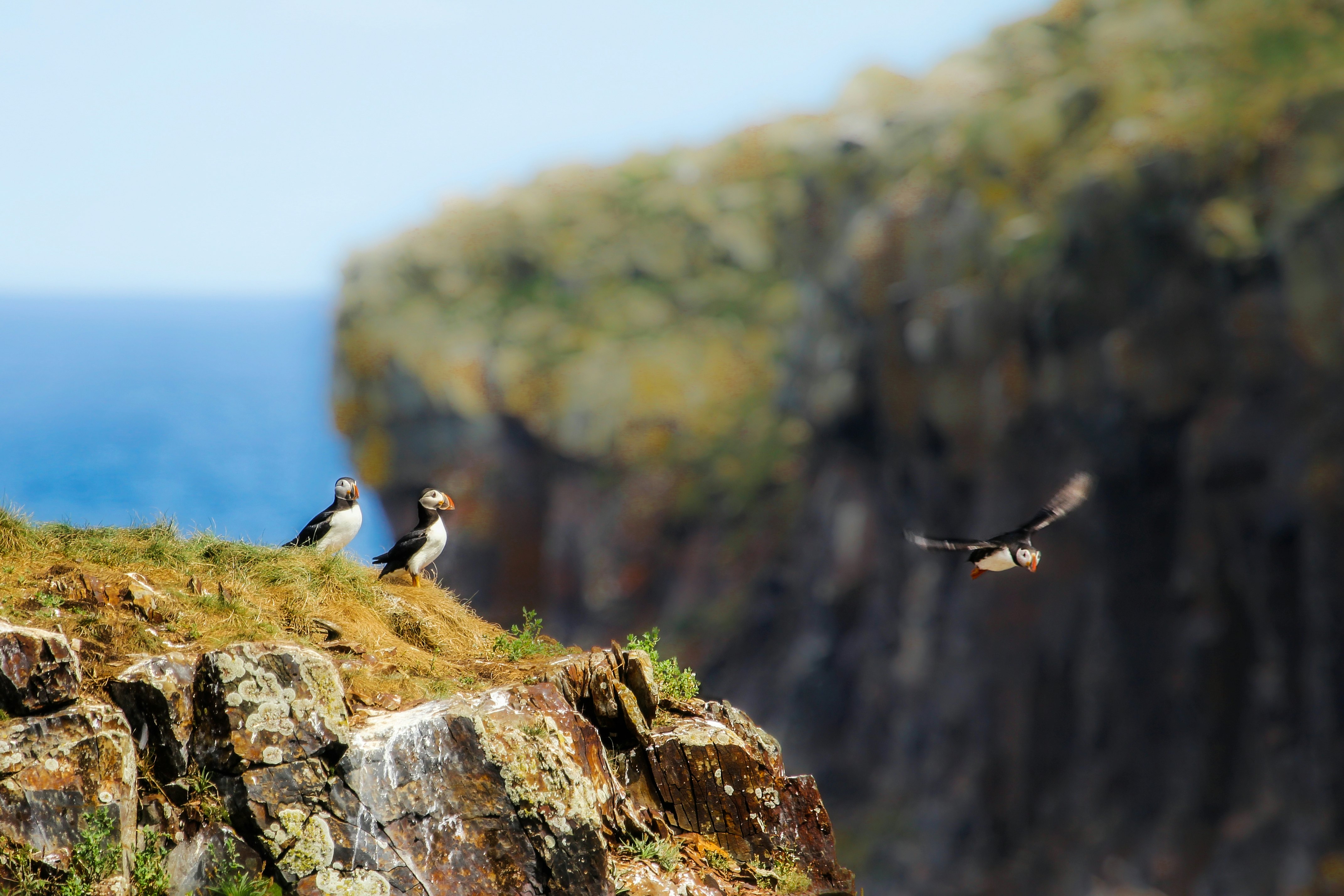
Peep the puffin colonies at Elliston Island, Newfoundland
Best time to go: May to August
Puffins are a favorite when it comes to Canadian birds. Their pudgy little bodies and colorful facial features make for perfect photographs as they hop along the rocks and dive into the ocean in search of their next meal. Puffins are not known to be great flyers. In fact, they are downright clumsy, especially when landing. But they’re powerful swimmers.
Puffins can be found in a few spots around Atlantic Canada, but one of the best places to see them is Elliston Island in Newfoundland.
Most places only offer puffin viewing from boats, but here visitors can see them by boat or by walking up to the steep cliffs where the colonies live. May to August is the best time to see them as this is puffin breeding season.
Local tip: Bring a pair of binoculars so you can better see the puffins dive into the sea to catch fish.
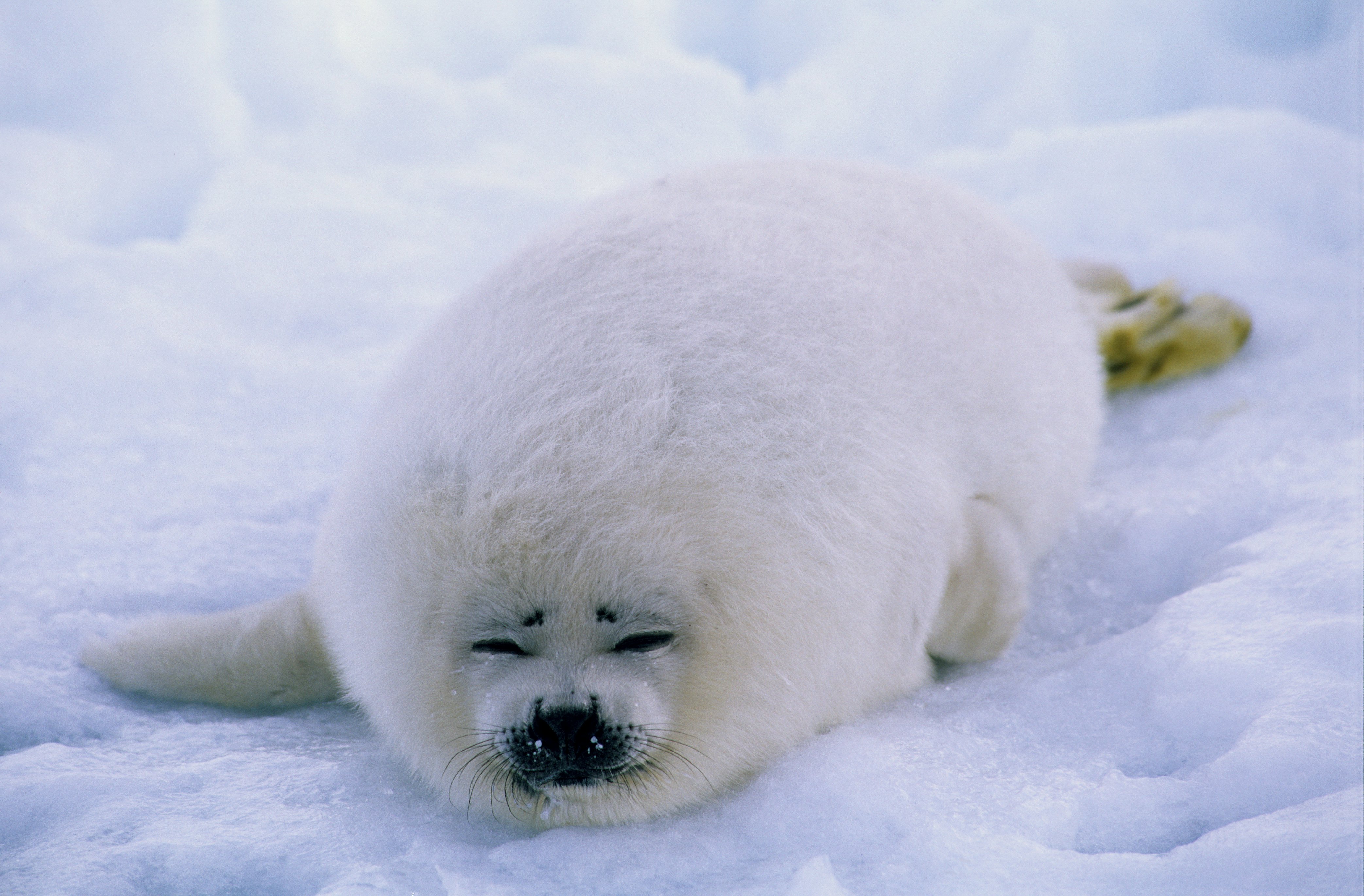
Bark with baby seals in lles de la Madeline, Quebec
Best time to go: Mid-February to mid-March
Early March is baby seal season in this lesser-known part of Canada. The small archipelago of Iles de la Madeline, or the Magdalen Islands, is found in the Gulf of St Lawrence.
Every year, hundreds of thousands of harp seals make their way to the ice floes surrounding these islands to give birth. The seal pups, known as “whitecoats'' thanks to their fluffy white fur, can be found nursing, exploring and even barking just days after being born.
Harp seal watching has a short season as the ice floes are accessed by helicopter, so visits are strongly influenced by weather and ice conditions.
Local tip: These baby seal tours are offered by Hôtel Château Madelinot with limited space. You’ll want to book your trip about a year in advance (or more) to ensure availability.








